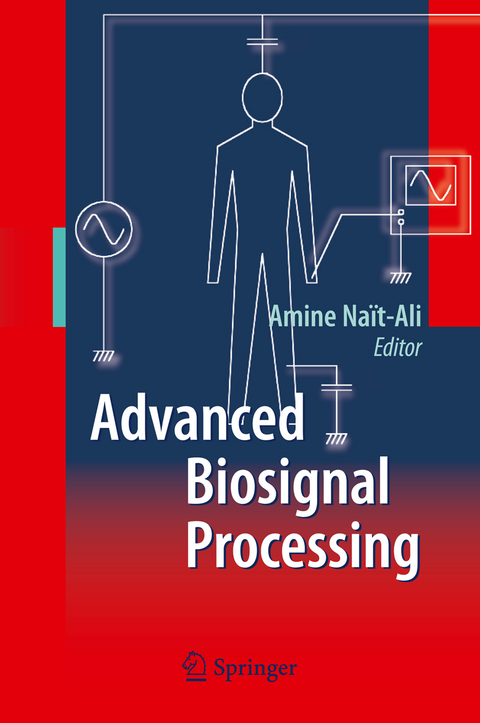
Advanced Biosignal Processing
Springer Berlin (Verlag)
978-3-642-10045-1 (ISBN)
Generally speaking, Biosignals refer to signals recorded from the human body. They can be either electrical (e. g. Electrocardiogram (ECG), Electroencephalogram (EEG), Electromyogram (EMG), etc. ) or non-electrical (e. g. breathing, movements, etc. ). The acquisition and processing of such signals play an important role in clinical routines. They are usually considered as major indicators which provide clinicians and physicians with useful information during diagnostic and monitoring processes. In some applications, the purpose is not necessarily medical. It may also be industrial. For instance, a real-time EEG system analysis can be used to control and analyze the vigilance of a car driver. In this case, the purpose of such a system basically consists of preventing crash risks. Furthermore, in certain other appli- tions,asetof biosignals (e. g. ECG,respiratorysignal,EEG,etc. ) can be used toc- trol or analyze human emotions. This is the case of the famous polygraph system, also known as the "lie detector", the ef ciency of which remains open to debate! Thus when one is dealing with biosignals, special attention must be given to their acquisition, their analysis and their processing capabilities which constitute the nal stage preceding the clinical diagnosis. Naturally, the diagnosis is based on the information provided by the processing system.
Biosignals: Acquisition and General Properties.- Extraction of ECG Characteristics Using Source Separation Techniques: Exploiting Statistical Independence and Beyond.- ECG Processing for Exercise Test.- Statistical Models Based ECG Classification.- Heart Rate Variability Time-Frequency Analysis for Newborn Seizure Detection.- Adaptive Tracking of EEG Frequency Components.- From EEG Signals to Brain Connectivity: Methods and Applications in Epilepsy.- Neural Network Approaches for EEG Classification.- Analysis of Event-Related Potentials Using Wavelet Networks.- Detection of Evoked Potentials.- Visual Evoked Potential Analysis Using Adaptive Chirplet Transform.- Uterine EMG Analysis: Time-Frequency Based Techniques for Preterm Birth Detection.- Pattern Classification Techniques for EMG Signal Decomposition.- Parametric Modeling of Some Biosignals Using Optimization Metaheuristics.- Nonlinear Analysis of Physiological Time Series.- Biomedical Data Processing Using HHT: A Review.- to Multimodal Compression of Biomedical Data.
| Erscheint lt. Verlag | 19.10.2010 |
|---|---|
| Zusatzinfo | XVI, 378 p. 218 illus., 3 illus. in color. |
| Verlagsort | Berlin |
| Sprache | englisch |
| Maße | 155 x 235 mm |
| Gewicht | 585 g |
| Themenwelt | Informatik ► Theorie / Studium ► Künstliche Intelligenz / Robotik |
| Mathematik / Informatik ► Mathematik | |
| Medizinische Fachgebiete ► Innere Medizin ► Kardiologie / Angiologie | |
| Medizin / Pharmazie ► Physiotherapie / Ergotherapie ► Orthopädie | |
| Naturwissenschaften ► Physik / Astronomie ► Thermodynamik | |
| Technik | |
| Schlagworte | biomedical engineering • classification • detection • ecg • EEG • Elecromyogram • Electrocardiogram • Elektroenzephalografie • Elektroenzephalogram • EMG • Evoked potential • fuzzy • Heuristics • Metaheuristic • Modeling • Network • Optimization • Radiologieinformationssystem • Science • Signal Processing • Wavelets |
| ISBN-10 | 3-642-10045-7 / 3642100457 |
| ISBN-13 | 978-3-642-10045-1 / 9783642100451 |
| Zustand | Neuware |
| Haben Sie eine Frage zum Produkt? |
aus dem Bereich


